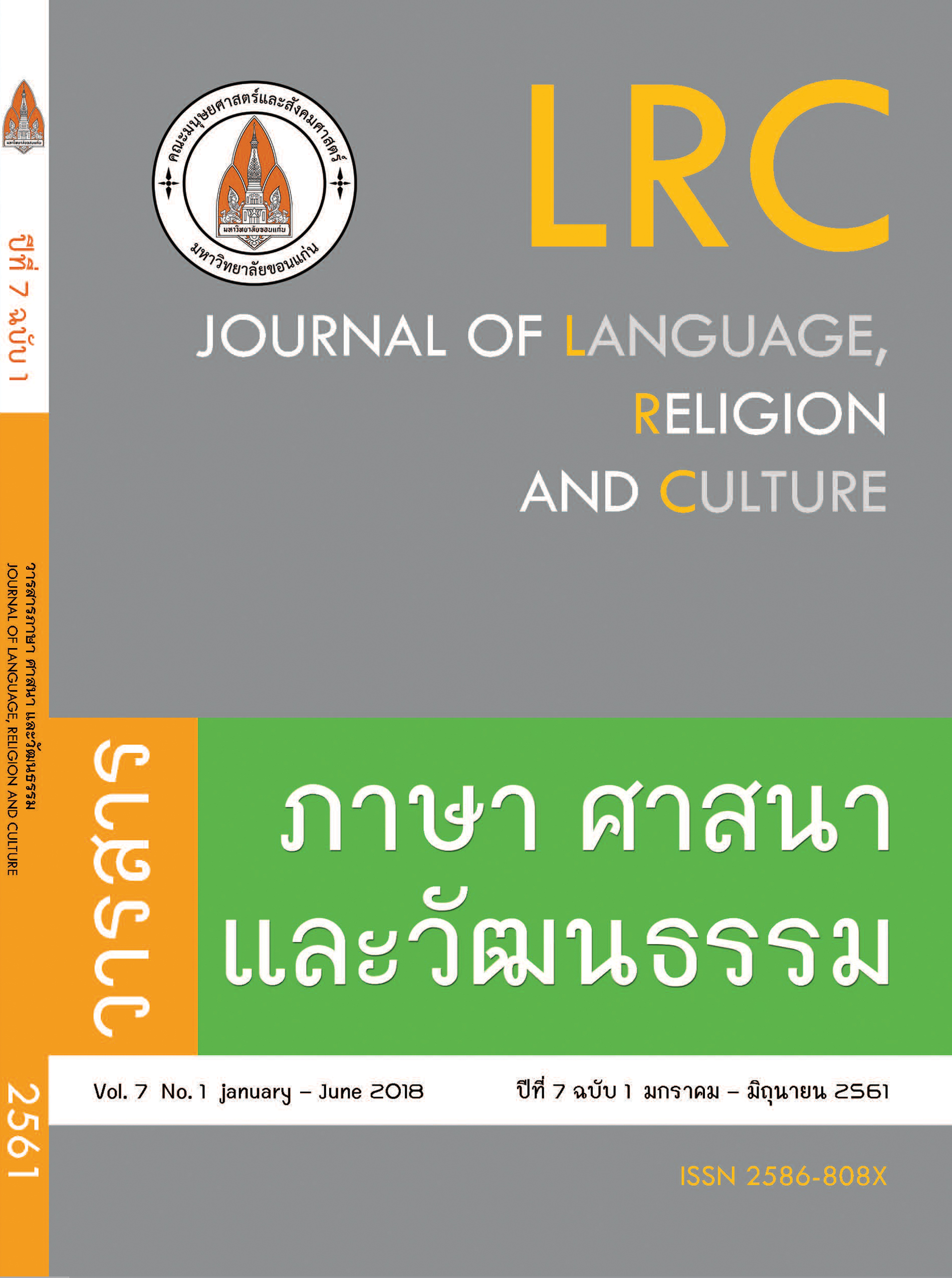อุปลักษณ์เชิงมโนทัศน์คำเกี่ยวกับอวัยวะในภาษาจีนกับภาษาไทย; Conceptual Metaphors in Chinese and Thai Languages: Words of Body Parts
คำสำคัญ:
คำเกี่ยวกับอวัยวะ, อุปลักษณ์เชิงมโนทัศน์, ภาษาจีน, ภาษาไทย, body part words, conceptual metaphors, Chinese, Thaiบทคัดย่อ
ความแตกต่างทางด้านวัฒนธรรมของแต่ละชนชาติ ย่อมส่งผลให้กระบวนการคิดบางอย่างมีความแตกต่างกัน บทความนี้อภิปรายเกี่ยวกับคำที่เกี่ยวข้องกับอวัยวะที่ใช้การอุปลักษณ์เพื่อสื่อมโนทัศน์ใหม่ในภาษาจีนกับภาษาไทย โดยคำเกี่ยวกับอวัยวะ
ที่เลือกมา ได้แก่ 1. 头, 首 (หัว) 2. 脸, 面 (หน้า) 3. 眼, 目 (ตา) 4. 口, 嘴 (ปาก) 5. 手 (มือ) 6. 脚, 足 (เท้า) ซึ่งเป็นคำเกี่ยวกับอวัยวะที่มีความถี่สูงปรากฏในฐานข้อมูลของศูนย์วิจัยภาษาศาสตร์ภาษาจีน มหาวิทยาลัยปักกิ่ง (Center for Chinese Linguistics Peking University) บทความจะกล่าวถึงความคล้ายคลึงกันของมโนทัศน์ของคำเกี่ยวกับอวัยวะในภาษาจีนกับภาษาไทย ที่มีการใช้การทำงานของอวัยวะ ตำแหน่ง และรูปร่างลักษณะมาสื่อความหมาย และความแตกต่าง โดยในภาษาจีนมีการนำคำเกี่ยวกับอวัยวะทั้ง 6 นี้ มาเรียกมโนทัศน์ใหม่มากกว่าในภาษาไทย โดยมโนทัศน์ดังกล่าวจะมีการเชื่อมโยงไปถึงแนวคิดที่แตกต่างกัน บางคำใช้สื่อความหมายต่างกัน และในความหมายเดียวกันหรือคล้ายคลึงกันก็ใช้คำเกี่ยวกับอวัยวะที่ต่างกัน รวมไปถึงความเชื่อและความคุ้นเคยกับสิ่งรอบตัวที่แตกต่างกันก็อาจเป็นผลให้เห็นแนวคิดต่างกันในรูปของภาษา
Abstract
Different countries have their own cultures, which influence their thinking processes. This paper discusses words referring to body parts that are used as metaphors to covey new concepts in Chinese and Thai languages. Six words of body parts selected to compare how Chinese and Thai use and perceive metaphors include the words head, face, eye, mouth, hand, and foot; these words are high frequent body part words occurring in the data base of the Center for Chinese Linguistics, Peking University. Chinese and Thai resemble considerably in terms of how body part words are used as metaphors to convey new concepts, especially on the functions of the organs as well as their positions and appearances. However, Chinese tends to use these six words to refer to new concepts at a greater extent compared against Thai, revealing different thinking systems between Chinese and Thai people. Some words convey different metaphoric meanings; for similar metaphoric meanings, different words may be used. Different ways of thought may be shaped by beliefs and surroundings of different cultures, which are shown in languages.







